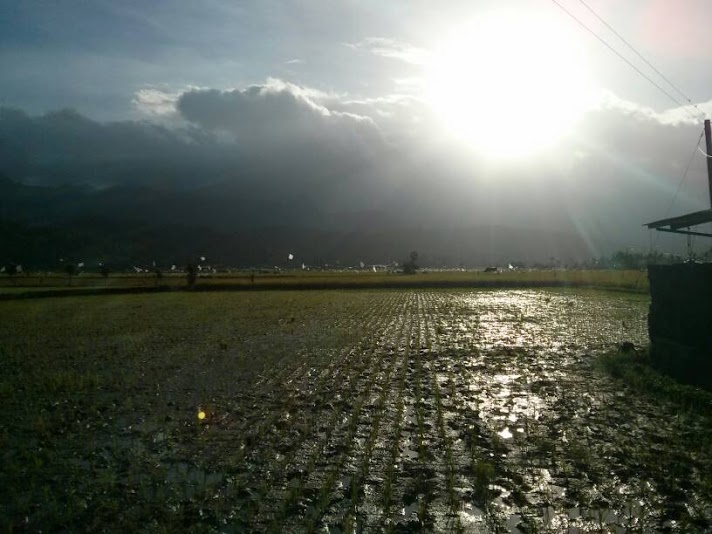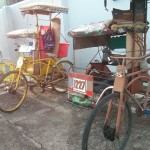Life as a Leyteño: Getting around

Even with my limited experience traveling around the Philippines, I’ve been around enough to know that it’s not a country where you can apply the “seen one, seen ’em all” city slicker mentality. Each province and heck, probably each barangay (town) has its own unique customs and in many cases, even its own dialect. The island of Leyte is no exception; from the start to finish of my trip, I must have heard at least three different dialects being spoken; two of which I’ve never heard spoken in my entire life and I’ve been around a LOT of Filipinos here in the States.
During my stay in Leyte, I spent the majority of my time in the city of Baybay; located in the Western coast of Leyte facing the Camotes Sea and acts as something of a gateway between North and Southern Leyte.
It’s not much of a tourist destination, as evidenced by the lack of the typical tourist traps like souvenir shops and Western imports (like McDonalds) that are common in more popular areas. This is a trend repeated throughout most cities in Leyte, making it a region that’s largely free of the Western influence penetrating most other provinces in the Philippines.
Depending on what you’re looking for during your stay in the country, that could be a good or a bad thing. I didn’t make the long trek to Leyte just to spend my days in an air conditioned McDonalds, snacking on Big Macs and shopping for overpriced goods imported from the West. The last time I vacationed in the Philippines, my stay mostly consisted of hanging out in malls and sipping on milk tea; a comfortable and relaxing time for sure, but I could have driven 15 miles to the nearest mall here in the States and had the same experience in addition to having $1600 more in the bank account. Of course I’m not talking about completely surrendering every modern convenience, but simply to return to the basic necessities; to spend the days as the locals do.
Despite the availability of various modes of transport, the majority of locals still prefer going on foot when they’re going about their business in town. Pedestrians crowd nearly every street and pathway in the city and unlike in the States, they’re allowed to walk any part of the road they please. This may sound like a recipe for regular hit-and-runs, but drivers and riders in the Philippines are much more aware of what’s happening on the road than their Western counterparts. If you’ve never spent any time of the roads in the Philippines (especially the provinces), the way everyone behaves may be a little confusing and understandably so.
The road is essentially a free-for-all; as a pedestrian, don’t expect drivers to let you pass or cross a street or intersection no matter how long you’ve been waiting and how anxious you look and as a driver, forget any notion of right-of-way, it’s your job to avoid and pass any random pedestrians in the roadway and other slower moving traffic. On paper, it sounds like complete and utter chaos; and in reality, it actually kinda is, but in some kooky way, it works. Since the roads are so busy, drivers and pedestrians alike are very attuned at all times to their surroundings and vehicles aren’t able to build up too much speed so even if there were an incident, it would be fairly minor. The biggest problem with drivers in the States is that they’re lulled by a false sense of security and safety so they fail to realize just how much attention and respect the activity deserves. In the Philippines, a driver who is inattentive or ignorant of their surroundings is likely to end up in a ditch or worse.
In town, the majority of cars either belong to well off families or local businesses; their size and appetite for fuel make them an unpopular choice for the average Pinoy. As a result, motorcycles, scooters, and mopeds (all commonly referred to as ‘mo-tors’) are far more common and with good reason. These bikes are typically under 250cc and are small enough to sneak between the tightest gaps in even the busiest downtown area; in addition, they get great fuel mileage.
Those who own neither bike nor car is left with going on foot or availing of public transportation. In most metropolitan areas of the Philippines, jeepneys are a common sight, but not so in Baybay, where they seem to have been replaced by multicabs, which are basically cute, tiny trucks with passenger cabs instead of cargo beds. These operate within city limits and are an affordable option if you need to get across town.
Then there’s the ubiquitous tricycle, which as the name suggests, is a motorcycle equipped with a sidecar for carrying passengers. There are several variations of the tricycle, some have sidecars so small they can only accommodate two passengers while some are large enough to seat 6. Then there’s the Baybay favorite, the cheapest form of wheeled conveyance available, the humble potpot. It gets its name from the sound it makes when the driver squeezes the clown horn to attract attention. It’s P5 per person (that’s 11 cents) to ride a potpot and it will take you to pretty much anywhere within the city center and there’s no extra charge for your luggage to ride. The sidecar can seat as much 4, maybe even 5 people which amounts to dang near 600lbs of load, but somehow even the most gaunt and malnourished driver is able to get the thing moving and keep in mind, these are single-speed bikes we’re talking about! These guys are all over town and will honk at any person they see standing around, hoping to solicit a fare. With the large amount of potpots in town, at any given day a potpot driver might make P100-P150 ($2.20 to $3.33) which is piddling considering the amount of physical endurance their job requires, but yet they never expect a tip. They start showing up around as early as 5:30AM and ride as late as 7PM, so at times they maybe your only option for transportation during odd hours.
If it’s a warm day and the air is still, you might want to consider helping out the locals by taking a potpot to your destination. The drivers are familiar with all of the spots and attractions around town, so all you really need to do is tell them where you want to go and enjoy the ride, knowing that you’re giving a man his livelihood and doing your part for the environment by not burning fuel and producing emissions.


